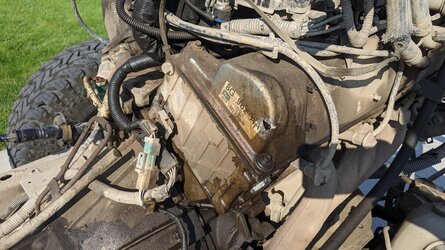Went ahead and cleaned then swapped back in the original MAF, but didn't see much of a difference. I used a can of MAF cleaner to spray it down with.
I also had the ELM327 came in today. Really cool tool. Didn't know there was that much you could do. Blows my basic code scanner out of the water, and was less than 1/3 the cost too!
I can see the exact ABS issues im having, as well as an error code for the rear wiper blade. Crazy.
Anyway, getting to business.
The data got cut off, I ran it for a 15 minute trip, but something happened. Can always run it again.
On this you can see:
1-20: Softly accelerating, then coasting down a neighborhood road.
20-30: Hitting the throttle while pulling out onto a 50 MPH road.
30-137: Dropping into and riding in cruise control @50 MPH
137-230: manually driving behind another car at about 45 MPH.
Next time I will add speed as well. Down the left we have Throttle, Engine Load, RPMs, Long FT1, Short FT1, O2 bank 1 Front, Long FT2, Short FT2, O2 Bank 2 Front, Idle Air Control, Fuel PWM bank 1
From my inexperienced look, it seems when engine load is above ~25% its running fine, its just when it's below that that there is issues.
Next up we have idling
At about 44 seconds I turned off the heater blower, 165 I turned off the headlights, and 175 I turned off the radio (it wasn't playing at any time, just turned it all the way off)
I also did one other test looking at misfires
Down the left we have Battery Voltage, Camshaft Sensor, Misfire Count, Misfire Cylinder 1, Miss Monitor, Misfire condition, , Misfire Cylinder 2, Misfire Cylinder 3, Misfire Cylinder 4, Misfire Cylinder 5, Misfire Cylinder 6
First off, I can hear the exhaust poofing much more than what is noted here.
To me this looks like there is a misfire issue on Cylinder 3. It has the most misfires, and 5+6 that fire either side of it also have misfires. It could just be knocking the rhythm off a touch and causing erroneous hits on 5+6.
About 9 months ago I had an actual misfire issue on Cylinder 6 that threw codes, and it was diffrent than this. In that case it turned out to be a bad fuel injector.
Just going over other articles I wonder if the exhaust valve is not seating right on cylinder 3. That would cause a poof out the exhaust for sure. Will deffinitly try a leakdown test when the tool gets here and see what happens.
Let me know what yall think. Im making educated guesses here, but this is the first time im working with tools like this.











